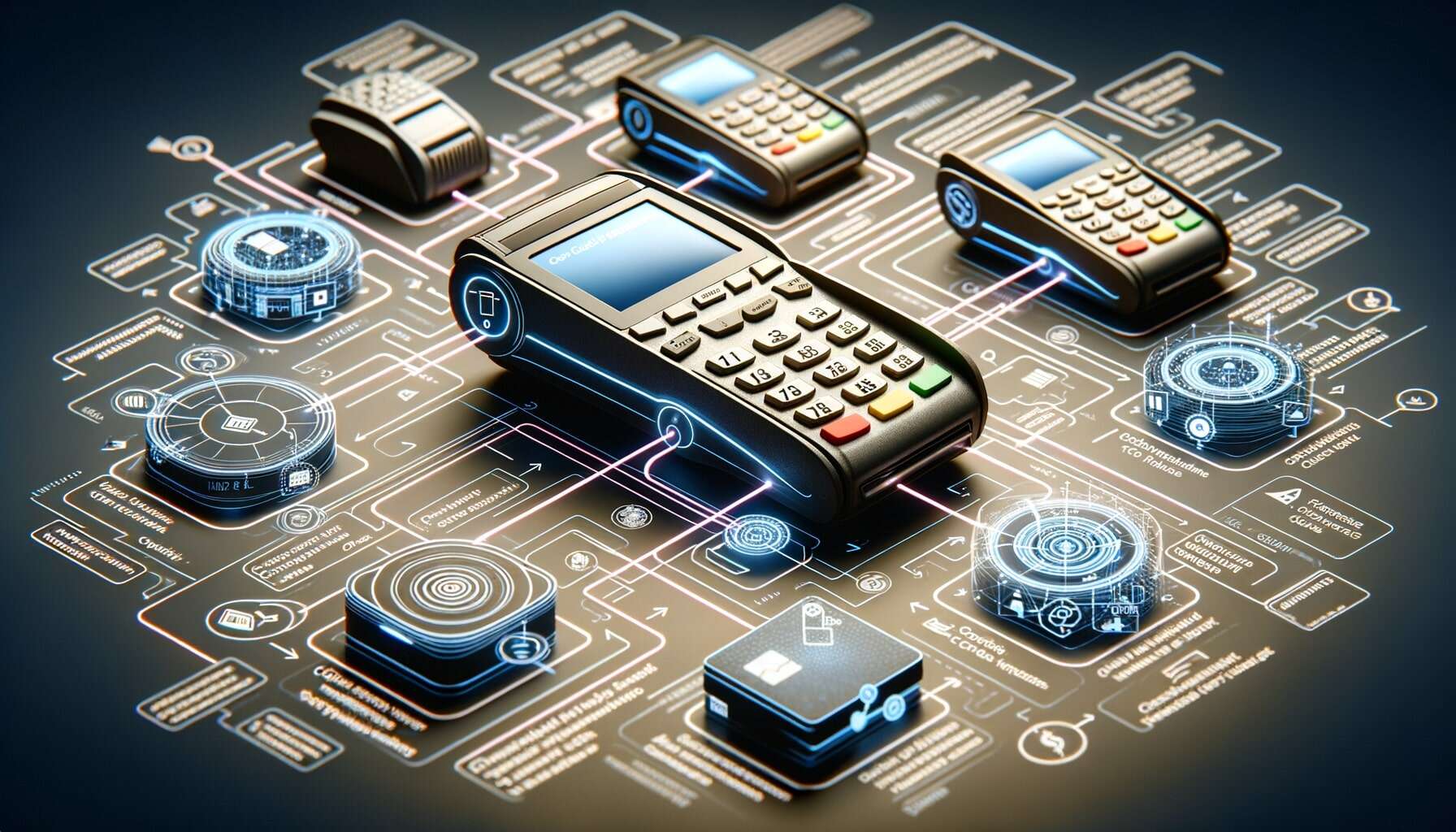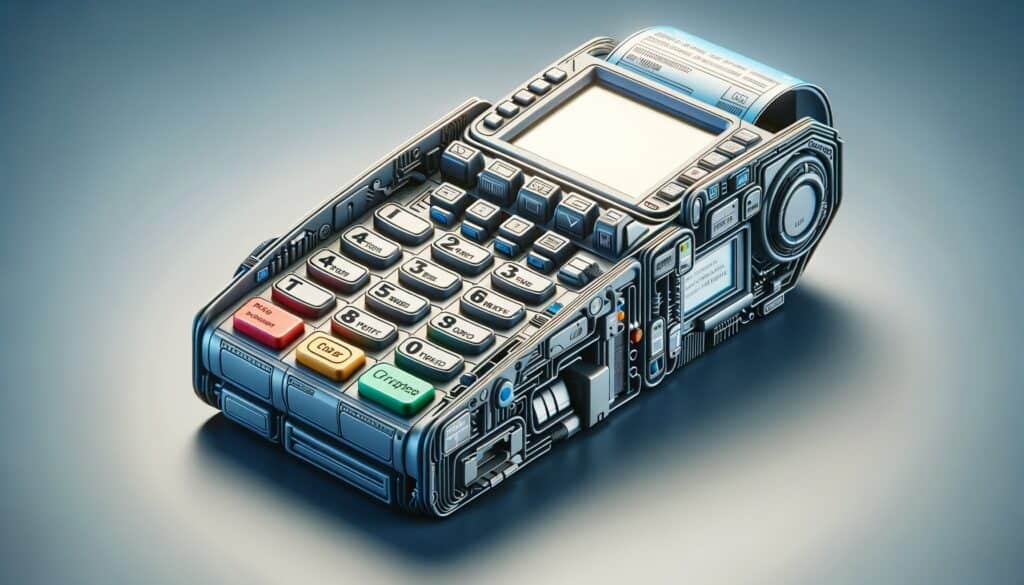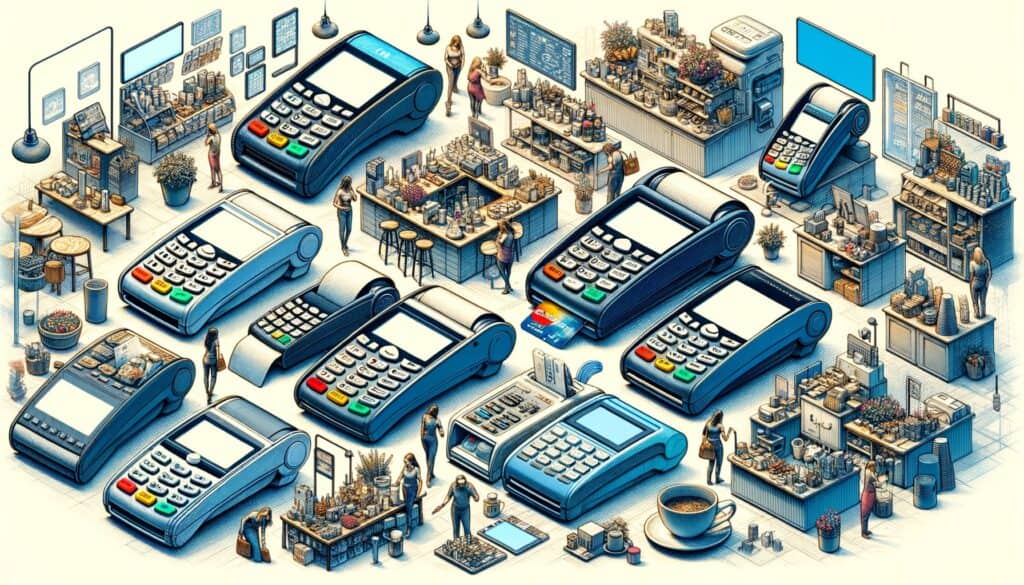
By Harriet Forster March 24, 2025
Credit card terminals are essential tools for businesses that accept credit card payments. These devices allow merchants to process transactions quickly and securely, providing convenience for both the business and the customer.
In this article, we will explore how credit card terminals work, the different types available, and how to choose the right one for your business. We will also discuss the setup and installation process, troubleshooting common issues, and best practices for maintaining the security of your credit card terminal.
Understanding the Components of a Credit Card Terminal

To understand how credit card terminals work, it is important to familiarize yourself with their components. A typical credit card terminal consists of a keypad, a display screen, a card reader, and a receipt printer. The keypad allows the merchant to input transaction details, such as the purchase amount and customer’s PIN number.
The display screen provides feedback to the merchant and prompts the customer for necessary information. The card reader is used to read the information stored on the magnetic stripe or chip of the credit card. Finally, the receipt printer generates a printed record of the transaction for the customer.
How Does a Credit Card Terminal Process Transactions?

When a customer presents their credit card for payment, the merchant will initiate the transaction on the credit card terminal. The terminal will prompt the merchant to enter the purchase amount and other relevant details. The customer will then be prompted to insert or swipe their credit card, depending on the type of terminal being used. The terminal will read the information stored on the card’s magnetic stripe or chip, including the cardholder’s account number and expiration date.
Once the card information is obtained, the terminal will establish a secure connection with the payment processor or acquiring bank. This connection ensures that the transaction data is encrypted and transmitted securely.
The payment processor or acquiring bank will then verify the cardholder’s account and available funds. If the transaction is approved, the terminal will print a receipt for the customer and complete the transaction. If the transaction is declined, the terminal will display an error message, and the customer will be asked to provide an alternative form of payment.
Different Types of Credit Card Terminals

There are several types of credit card terminals available, each with its own features and capabilities. The most common types include traditional countertop terminals, wireless terminals, mobile card readers, and virtual terminals.
1. Traditional Countertop Terminals: These are the most common type of credit card terminals and are typically used in brick-and-mortar stores. They are connected to a landline or internet connection and provide a secure and reliable way to process transactions.
2. Wireless Terminals: Wireless terminals are ideal for businesses that require mobility, such as restaurants or food trucks. They use cellular networks to connect to the payment processor, allowing transactions to be processed anywhere with a cellular signal.
3. Mobile Card Readers: Mobile card readers are small devices that can be attached to a smartphone or tablet. They are popular among small businesses and individuals who need a portable and affordable solution for accepting credit card payments.
4. Virtual Terminals: Virtual terminals are software-based solutions that allow businesses to process credit card payments using a computer or tablet. They are commonly used for e-commerce or mail/phone order businesses where the card is not physically present.
Choosing the Right Credit Card Terminal for Your Business

When choosing a credit card terminal for your business, there are several factors to consider. These include the type of business you operate, your budget, and your specific needs and preferences. Here are some key points to keep in mind:
1. Connectivity: Determine whether you need a terminal that connects to a landline, internet, or cellular network. Consider the availability and reliability of these connections in your area.
2. Features: Consider the features you require, such as the ability to accept contactless payments, EMV chip cards, or mobile wallets like Apple Pay or Google Pay. Some terminals also offer additional features like inventory management or customer loyalty programs.
3. Security: Ensure that the terminal you choose meets the latest security standards, such as PCI DSS compliance. Look for features like encryption and tokenization to protect sensitive cardholder data.
4. Cost: Consider the upfront cost of the terminal, as well as any ongoing fees or charges associated with its use. Compare prices from different providers and consider the long-term value and return on investment.
Setting Up and Installing a Credit Card Terminal
Once you have chosen the right credit card terminal for your business, the next step is to set it up and install it. The process may vary depending on the type of terminal you have selected, but here are some general steps to follow:
1. Unpack the Terminal: Carefully unpack the terminal and ensure that all the components are included. Read the user manual or installation guide provided by the manufacturer for specific instructions.
2. Connect the Terminal: Depending on the type of terminal, you may need to connect it to a landline, internet, or cellular network. Follow the instructions provided to establish a secure and stable connection.
3. Configure the Terminal: Most terminals require some initial configuration before they can be used. This may involve setting the date and time, configuring network settings, or entering your merchant account information.
4. Test the Terminal: Once the terminal is connected and configured, perform a test transaction to ensure that everything is working correctly. Verify that the transaction is processed successfully and that the receipt is printed as expected.
Troubleshooting Common Issues with Credit Card Terminals
While credit card terminals are generally reliable, occasional issues may arise. Here are some common problems you may encounter and how to troubleshoot them:
1. Connection Issues: If your terminal is not connecting to the network, check the cables and connections to ensure they are secure. Restart the terminal and verify that the network settings are correct.
2. Card Reading Errors: If the terminal is having trouble reading cards, ensure that the card is inserted or swiped correctly. Clean the card reader with a soft cloth to remove any dirt or debris that may be interfering with the reading process.
3. Printer Problems: If the receipt printer is not working, check that it has enough paper and that the paper is loaded correctly. If the issue persists, try restarting the terminal or contacting the manufacturer for further assistance.
Security Measures and Best Practices for Credit Card Terminals
Maintaining the security of your credit card terminal is crucial to protect your customers’ sensitive information and prevent fraud. Here are some security measures and best practices to follow:
1. PCI DSS Compliance: Ensure that your credit card terminal meets the Payment Card Industry Data Security Standard (PCI DSS) requirements. This includes using encryption, regularly updating software, and implementing strong access controls.
2. Secure Network Connections: Use secure and encrypted connections, such as SSL or TLS, when transmitting transaction data. Avoid using public or unsecured Wi-Fi networks, as they can be vulnerable to hacking.
3. Regular Software Updates: Keep your credit card terminal’s software up to date to ensure that you have the latest security patches and bug fixes. Check for updates regularly and install them promptly.
4. Employee Training: Train your employees on how to handle credit card transactions securely. Teach them to identify suspicious activity, such as unusual card behavior or tampering with the terminal.
Frequently Asked Questions about Credit Card Terminals
Q1. Can I use my credit card terminal for debit card transactions?
A1. Yes, most credit card terminals can process both credit and debit card transactions. However, you may need to enable this feature or configure the terminal to accept debit cards.
Q2. How long does it take for a credit card transaction to be processed?
A2. The time it takes for a credit card transaction to be processed can vary depending on several factors, including the type of terminal, the speed of the network connection, and the payment processor’s response time. In general, transactions are processed within a few seconds.
Q3. Can I accept contactless payments with my credit card terminal?
A3. Many modern credit card terminals support contactless payments, such as those made with mobile wallets or contactless credit cards. Look for terminals with NFC (Near Field Communication) capabilities to accept these types of payments.
Q4. What should I do if my credit card terminal is not working?
A4. If your credit card terminal is not working, first check the power source and connections to ensure they are secure. Restart the terminal and follow any error messages or prompts that appear on the screen. If the issue persists, contact your terminal provider or the manufacturer for further assistance.
Conclusion
Credit card terminals play a vital role in facilitating secure and efficient transactions for businesses of all sizes. Understanding how these devices work, the different types available, and how to choose the right one for your business is essential for success in today’s digital economy.
By following best practices for setup, installation, and security, you can ensure that your credit card terminal operates smoothly and provides a seamless payment experience for your customers.